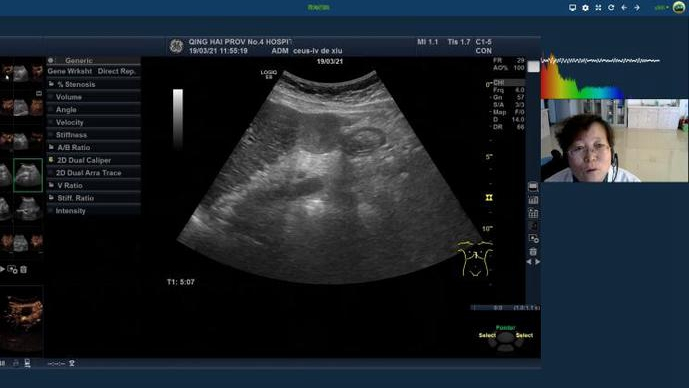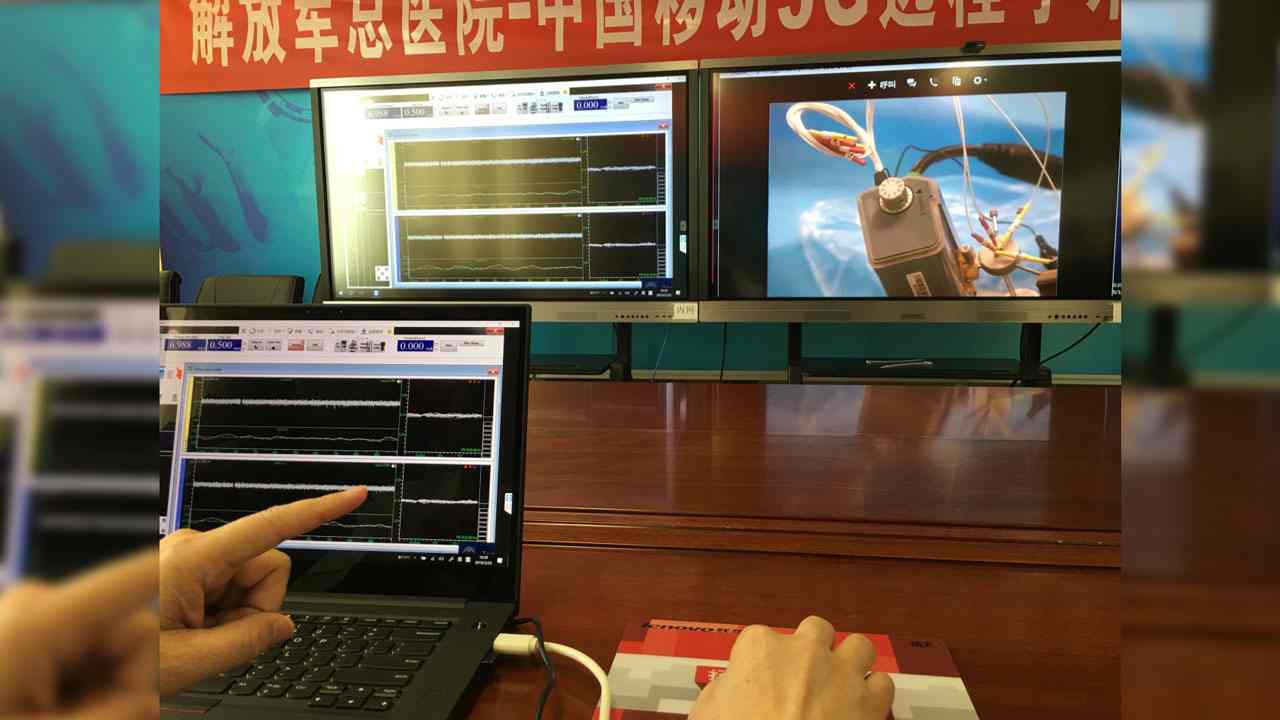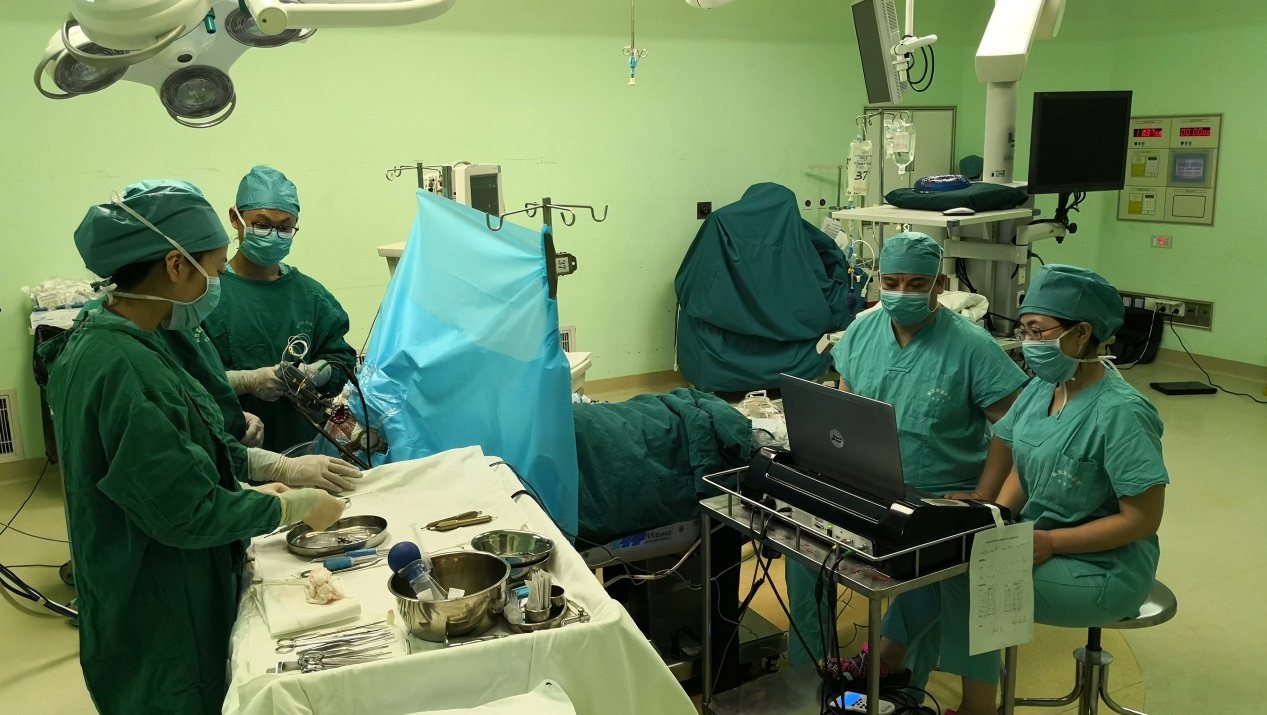
Technology
22:54, 02-Apr-2019
5G application in medical sector: Shanghai is at the cutting edge
Updated
11:49, 03-Apr-2019
By Pan Zhaoyi

-- "Double check with you, is this the right lymph node?" --
-- "Yes, the shallow one on the left side, check the size." --
-- "Ok, got it, 4 millimeters." --
-- "Puncturing be ready"--
-- "3, 2, 1, go." --
On the screen of the conference room in Shanghai Tenth People's Hospital, a needle is "jumping" in and out of the patient, who was diagnosed with abnormal cervical lymph nodes after two thyroid cancer surgeries, to suck up the hydrops from the diseased cells. The biopsy collected from the hydrops will help surgeons make better treatment decisions at a later stage.
The whole operation was being monitored by experts in Shanghai via the 5G network.
"4G networks promised barrier-free communication, but when it comes to image data transmission, there is a time lag. Watching the needle's movement without latency is barely possible," Sun Liping, a surgeon at the hospital, told the local media.
But now, things are working out for the better under the 5G signal. The whole process was performed under clear oral instructions from the high-definition low-latency video.
After the puncture procedure, the frame was switched to another patient who was thousands of miles away from Shanghai and was having an ultrasound scan.
Physicians in the two places discussed the case and then set the treatment plan based on the ultrasonic imaging within minutes.
02:29

It's said that the 5G ultrasound network system in Shanghai Tenth People's Hospital has been accessed by several medical institutions in different cities in China in a move to further ease the imbalance of domestic medical resources.
Ultrasound imaging: a wise choice for 5G application
As the latest generation of telecommunication technology, 5G can achieve up to 10 gigabits per second data rates, 100 times faster than current 4G networks.
For example, it takes about six minutes to download a two-hour film using 4G. But with 5G, the waiting time can be shortened to only 3.6 seconds. The fast speed brings more possibilities for China's medical industry.

Inside the operation room for implanting Deep-brain Stimulation Device for a patient suffering Parkinson's disease at People's Liberation Army General Hospital. /CGTN Photo
Inside the operation room for implanting Deep-brain Stimulation Device for a patient suffering Parkinson's disease at People's Liberation Army General Hospital. /CGTN Photo
In fact, telemedicine is not alien to us. From the emergence of the Internet, medical institutions around the world have made lots of attempts in static data transmission.
Under the 4G network, even the CT and MRI images with huge storage can be transmitted in a short span of time. At least, they are static images.
"But the problem is the ultrasound image we've talked about is a dynamic one, which is based on the time series," Sun explained.
"Even a simple abdominal ultrasound screening of one patient will generate up to 2 GB ultrasound image data. What's worse, these dynamic images must be transmitted in high consistency and low latency data environment in case of misdiagnosis." Because any frame being missed during the data transmission will be a disaster to the patient.
Meanwhile, the original image of the ultrasound can be instantly saved and archived on a server, helping improve the treatment that you've never dreamed about in the 4G era.
Compared to the traditional applications in the telecommunication and entertainment industries, the advantages of 5G technology seem to be even more obvious in the medical sector.
The clinical trial in Shanghai between the hospital and the service provider marked a new age of China's 5G application.
In March, a patient suffering from Parkinson's disease successfully received China's first 5G-based remote surgery with a deep brain stimulation implant in Hainan Province, southern China.
(Cover credit: Shanghai Observer)

SITEMAP
Copyright © 2018 CGTN. Beijing ICP prepared NO.16065310-3
Copyright © 2018 CGTN. Beijing ICP prepared NO.16065310-3